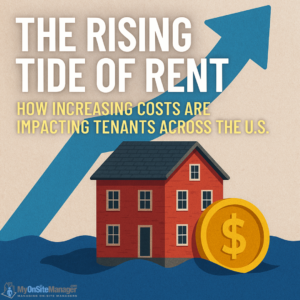In the past, renters seeking affordability could turn to smaller cities or rural towns, but those days are quickly fading. A new wave of rent hikes is hitting some of the most traditionally affordable parts of the U.S., forcing renters to make difficult decisions as housing costs escalate across the board.
What’s Driving Rent Hikes in “Affordable” Cities?
According to data highlighted by USA Today, rents are rising fastest in cities that were once considered budget-friendly. Markets like Lexington, KY; Louisville, KY; and Buffalo, NY have seen double-digit increases over the past year. Why is this happening?
-
Migration from High-Cost Areas: As people flee expensive metros like New York and San Francisco, they’re flocking to smaller, affordable cities. This influx is driving up demand—and prices.
-
Limited Housing Supply: Smaller cities often lack the construction momentum seen in larger urban centers. With few new units coming online, existing rentals are becoming scarce and expensive.
-
Investor Activity: Real estate investors are increasingly purchasing rental properties in emerging markets, raising rents to boost returns.
Impact on Tenants: From Strained Budgets to Difficult Trade-Offs
For millions of Americans, rising rent means much more than a higher monthly bill—it means a complete reshuffling of financial priorities.
-
Increased Cost Burden: The standard guideline is to spend no more than 30% of your income on housing. But in these “affordable” cities, many renters are now spending 40%, 50%, or more.
-
Displacement: When rents increase faster than wages, tenants may be forced to leave neighborhoods they’ve called home for decades.
-
Fewer Options: As the affordability buffer erodes, renters face shrinking choices. Many are left deciding between living in overcrowded units, moving further away from jobs and schools, or downgrading to substandard housing.
-
Delayed Life Milestones: Saving for a house, starting a family, or investing in education becomes far more difficult when the majority of income goes toward rent.
Spotlight on Affected Cities
The latest rent growth data shows that:
-
Lexington, KY saw an annual increase of 11%.
-
Buffalo, NY jumped nearly 10%.
-
Louisville, KY climbed over 9%.
These areas were once havens for working-class families, students, and retirees, but are now becoming battlegrounds in the national affordability crisis.
What Can Be Done? Potential Solutions for a Growing Crisis
Policymakers, developers, and local governments are being called to take action—but solutions are complex and vary by region.
1. Incentivize Affordable Housing Development
States and cities can offer tax breaks or fast-tracked permitting for developers who build or preserve low- and middle-income housing.
2. Implement Rent Stabilization Policies
Rent control and stabilization laws can protect tenants from sudden and excessive hikes, especially in rapidly gentrifying areas.
3. Expand Housing Vouchers and Support Programs
Low-income renters need assistance now. Expanded housing voucher programs can bridge the gap between income and cost.
4. Tenant Advocacy and Education
More communities are pushing for tenant rights, such as fair lease terms, eviction protections, and better living conditions.
5. Invest in Public Infrastructure
Encouraging growth in well-connected suburban and rural areas can ease the demand on overburdened cities.
Final Thoughts
The U.S. rental landscape is shifting—and not in favor of tenants. While attention has long been focused on sky-high rents in big coastal cities, this new trend reveals that no market is immune to affordability pressures. If traditionally affordable cities become out of reach, where will people go?
For now, renters are being forced to adapt—downsizing, relocating, or working multiple jobs to keep up with rent. But the long-term answer lies in bold, coordinated action at every level of government and industry.
Source: USA Today – Rent is rising in the least costly, affordable areas. Here’s how it’s affecting tenants

